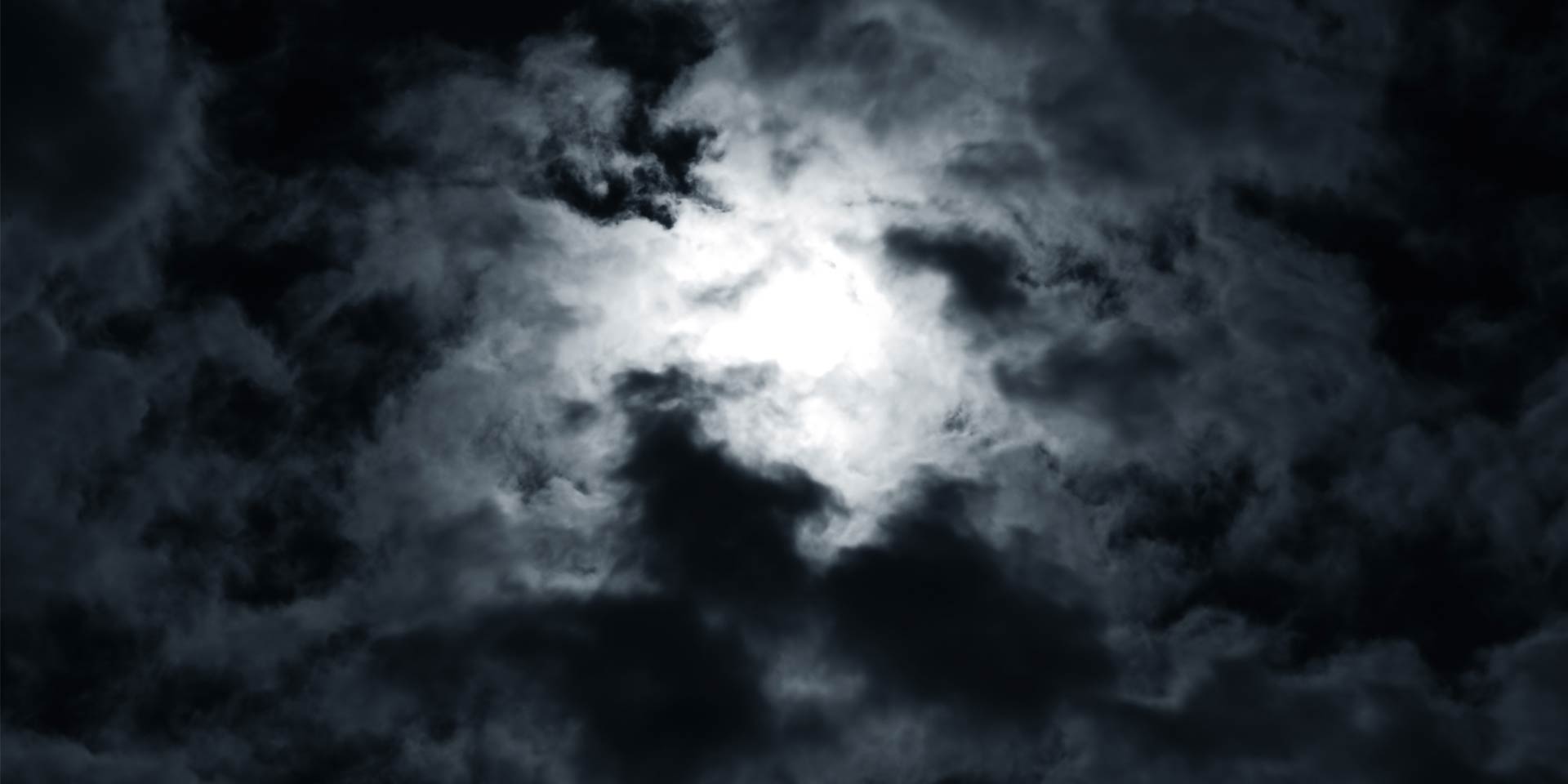On May 19th, 1780, a strange phenomenon turned a sunny morning into an unexpected night. The event, known as the Dark Day, was seen as a sign of divine judgment by contemporaries and as a means of ridiculing apocalyptic expectations by sceptics.
Scientists continue to debate the physical causes of the phenomenon, and despite the amazing progress made in recent years in deciphering the details of that day, there are still many unanswered questions. Christians who have long linked the event to the apocalyptic predictions of Scripture are becoming increasingly reserved in any categorical statements they make about it, seeking a theological justification for an end of the world that seems unwilling to come, and that natural disasters have seemed to signal for too many centuries.
Today, almost three centuries after the event, we rightly wonder what the Dark Day of May 19th, 1780 was, and how natural disasters, whether explainable or inexplicable, are a fitting indicator of the apocalypse of Jesus Christ.
A day like no other
After a tough winter, with a lot of ice and frost, the spring of 1780 was a long-awaited blessing for the people of North America. Even though the sun had been reddish for a few days and the sky sometimes seemed yellow, people did not anticipate anything special.
It was a Friday morning, when the sun revealed itself brightly on the horizon, generously offering hope for a clear new day. But soon clouds covered the sky, and slowly the day began to turn into night. Professor Samuel Williams of the University of Cambridge in Massachusetts says it all started around 10 a.m., and lasted until the middle of the next night.
From the descriptions of those who witnessed the event, it appears that the darkness was deep enough for the people to light their lamps, for the birds to go to their nests, for the roosters to sing, for the cattle to retreat to the stables, and for the bats to fly. The darkness dissipated a little in the evening, but was followed by an unusually dark night. For the first time, the darkness seemed to come right from the Egyptian plagues, and the light was without effect.
Pastor and historian William Gordon, one of the event’s witnesses, said that “the extent of this darkness was extraordinary. It was observed as far east as Falmouth. To the westward it reached to the farthest part of Connecticut and to Albany. To the southward, it was observed along the seacoasts, and to the north, as far as the American settlements extend.”[1]
The descriptions of eyewitnesses convey the emotion of a unique event, and are fervently written, with amazement and reverence. Not only do they manage to convey some information, but also the feelings of those who lived back then.
“The 19th of May, 1780 was a remarkably dark day. Candles were lighted in many houses; the birds were silent and disappeared, and the fowls retired to roost. The legislature of Connecticut was then in session in Hartford. A very general opinion prevailed, that the day of judgment was at hand.”[2]
“The darkness of the following evening was probably as gross as ever has been observed since the Almighty fiat gave birth to light… I could not help conceiving at the time, that if every luminous body in the universe had been shrouded in impenetrable shades, or struck out of existence, the darkness could not have been complete.”[3]
Witnesses also remembered that it was only after midnight that the moon became visible in the sky, but it was huge and bloody. When the sun rose again on May 20th, people sighed in relief, as if they were meeting an old friend they thought they would never see again.
On Saturday and Sunday, the churches were full and the sermons of the pastors had the same subject. They all saw in the event that they had experienced the exact fulfilment of Jesus’ words in the Gospel: “The sun will be darkened, and the moon will not give its light” (Mark 13:24). The impact was even greater, as just 25 years earlier, in 1755, a devastating earthquake had struck Portugal and Spain.
What happened on May 19th?
It is difficult to give an explanation that answers all the questions. Astronomers are almost certain that it was neither an eclipse nor another celestial body hiding the sun. The last total eclipse had been on May 4th, 1780, and the darkness it had caused had not lasted more than a minute and a half.
Researchers have also ruled out the possibility of a sandstorm or a volcanic eruption. The most plausible explanation came from professors at the University of Missouri, who studied tree rings in Canadian forests. They claimed that a large fire had broken out there, in the spring of 1780. The smoke, along with the fog and weather conditions plunged 13 American states into darkness.
Today, this explanation is accepted as the most plausible of all the attempts so far. The lack of modern means of communication and strong emotions would have made the then inhabitants of America ignore this hypothesis.[4] It is not clear, however, how the fire broke out and how it spread in the spring, after a series of rainy days and after a particularly cold winter, nor why to this day the phenomenon has not been repeated with anything like the same intensity in other places where there have been large forest fires.
Was May 19th a sign of the end?
Every year, on May 19, the world remembers the Dark Day and the feelings of some people who, like us, considered that the right to light is embedded in their genes. Christians cannot ignore this moment of history, nor stop wondering if all natural disasters, whether more or less explicable, can be considered signs of an imminent end of our world. What did Jesus mean in the Gospels and Revelation about the end of the world, and the signs that will precede this culminating event in history?
To answer this question, we need to briefly clarify some aspects of the purpose and role of signs in identifying the end of time from a biblical perspective.
George Eldon Ladd, a renowned professor of theology at the Fuller Theological Seminary in Pasadena, California, rightly observed that “the Olivet Discourse[5] describes no signs by which the end can be calculated”.[6] Jesus Christ did not intend to provide precise clues for the believers to identify the exact timing of future events, but rather to strengthen their belief that they lead to a sure end to history.
“You will hear of wars and rumours of wars but see to it that you are not alarmed. Such things must happen, but the end is still to come. Nation will rise against nation, and kingdom against kingdom. There will be famines and earthquakes in various places. All these are the beginning of birth pains. Then you will be handed over to be persecuted and put to death, and you will be hated by all nations because of me. At that time many will turn away from the faith and will betray and hate each other, and many false prophets will appear and deceive many people.
Because of the increase of wickedness, the love of most will grow cold, but the one who stands firm to the end will be saved. And this gospel of the kingdom will be preached in the whole world as a testimony to all nations, and then the end will come. Wherever there is a carcass, there the vultures will gather. Immediately after the distress of those days ’the sun will be darkened, and the moon will not give its light; the stars will fall from the sky, and the heavenly bodies will be shaken.’ Then will appear the sign of the Son of Man in heaven” (Matthew 24:6-14, 28-30).
The signs that Jesus mentions in Matthew 24 are important, not because they are inexplicable (on the contrary, they are simplified to be understood by anyone and many of them are generated by people) but because they point in the direction of history, and each generation needs this prophetic confirmation. “Believers in every age need to see the Advent signs in order to experience the reassurance of the certainty and imminence of Christ’s Coming.”[7]
Historical-prophetic meanings of the Dark Day
The place and role of the “dark day” are very special in the historical-prophetic interpretation of events in our world, precisely because they are set by the Bible in a unique context.
“The Dark Sun” in the BibleThe image of the “dark sun” in the eschatological context appears several times in the New Testament. It is foretold by Jesus on the Mount of Olives in Matthew 24 and Mark 13, it is mentioned on the occasion of His crucifixion in Matthew 27, and by Peter in Acts, chapter 2, and then repeated by John in Revelation, chapter 6. The latter passage is addressed by Dr Ranko Stefanovic in his commentary on the book of Revelation. A professor of New Testament at Andrews University in Michigan, Stefanovic says that “the historical fulfillment of this phenomenon has been dated by historicist scholars as May 19, 1780, when it was experienced in eastern New York and southern New England.”[8] |
Thus, in the text of the Gospels, it always appears as taking place “immediately after the distress of those days” or “following that distress”, which shows that the Dark Day will be a clear delimitation of specific historical periods. If the importance of the other prophetic signs lies in their increasingly frequent repetition and their prevalence as the history of the world draws to a close, the Dark Day is unique, and it marks the transition from the “distress of those days” to the period preceding the coming of the Son of Man.
The Bible is clear on this. Wars, diseases and natural disasters are only the “beginning of birth pains” and, like the vultures that gather above a carcass, they show that our world is struggling between life and death. The more vultures there are, and the more menacingly they circle in sky, the more predictable the fate of the dead below them. That is why the frequency, intensity, and extent of these catastrophic signs undoubtedly herald the end of the history of this earth.
Still, the “dark sun” is more than that. It shows the end of a period of “darkness” and “blood”, but also the beginning of the last stretch of the road. Darkness appears at the end of a dark and bloody Middle Ages, in which any burst of light was followed by deeper darkness, where realities seemed confusing and any step forward might have been a fall into the abyss.
In Revelation 6, the “dark sun” is accompanied by a great earthquake and a meteor shower. For this reason, historical theologians see in this series of events, which began with the great earthquake of Lisbon in 1755 followed by the Dark Day of 1780 and the meteor shower of 1833, the exact fulfilment of Scripture. The text marked the end of the last fixed prophetic periods, after which, according to Revelation, “there will be no more delay” (Revelation 10:6). Even if we cannot detail here all the arguments of this interpretation, which starts from the prophecy in the book of Daniel, chapters 7-9, and from Revelation 12, we can observe the amazing correspondence between the biblical prophecies and their historical appearance.
Is He still coming?
Perhaps the story of a dark day over two hundred years ago seems irrelevant to the 21st century. And yet, our search for meaning must lead us to the One who is the meaning of this history. Unlike other prophecies or other prophets from antiquity, the Bible is amazingly clear and precise. The language, easy to understand even for children, does not hide cryptic information. It is “the daily bread” (Matthew 6:11) for every human being.
A triple prophecy, accurately fulfilled after more than 1700 years, is a guarantee of authenticity, both for the passage in which it appears and for the book in its entirety. The scientific explanation of the phenomenon does not diminish the value of the predicted event but reminds us that it is Someone who holds the laws of physics and chemistry in His hands and rules over them. The dark day of May 19th, 1780 reminds us that there is Someone who not only knows how nature works but also rules over it and will one day come to hold accountable those who believe themselves to be masters of heaven and earth.
Still, the response of the people of the time to the appearance of the Dark Day confirms the famous saying that there are no atheists on a sinking ship. However, I wonder why we should cry out to God only when the sky is dark or when the waters overrun us. He is also the God of serene and peaceful days.
The “dark day” is a boundary between yesterday and tomorrow. Aside from it, there aren’t any other prophecies in Scripture that cover long periods until their fulfilment, but only the wait for the finality of this earth’s history. In other words, we are talking about the final leg of the journey. This event, in the unknowingness of our path, is the sign that we are going in the direction we started out in, and is the guarantee that everything that has been said about this path is about to open up in front of us.
The correct understanding of the place and role of eschatological signs can give today’s Christianity power and vision. “A truly biblical church will build for future generations, and yet will ever be praying with fervency: Thy Kingdom come, Thy will be done on earth, as it is in heaven. Even so, come quickly, Lord Jesus.”[9] The apocalypse and the signs that precede it are, in the biblical view, catastrophic only for those who consistently reject the message of saving grace. For the faithful, they announce the joy of a day awaited for a lifetime.
God does not win over the world through fear. The Bible encourages this view of history, often showing that Revelation is about Jesus, His love, and His righteousness. When today’s Christianity understands this, then all it has to do is obey what Jesus said: Be ready!


















